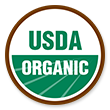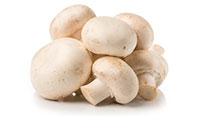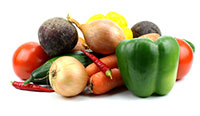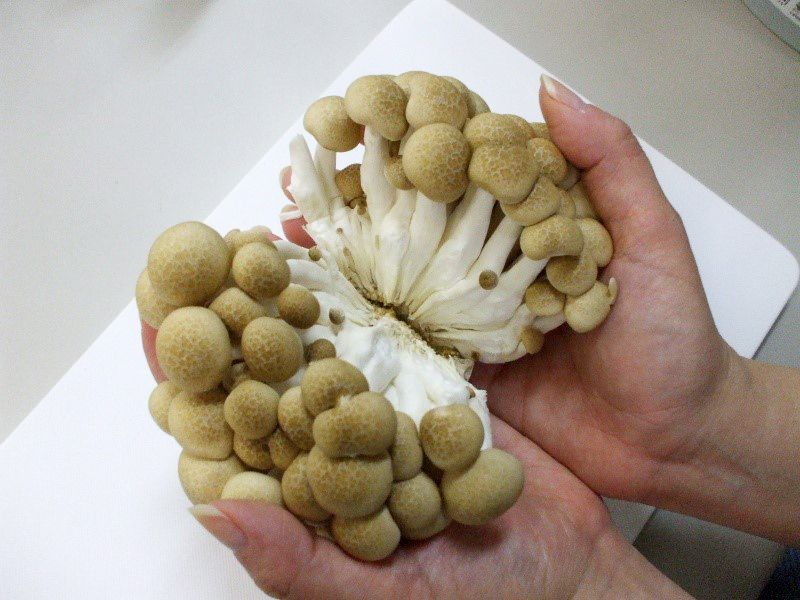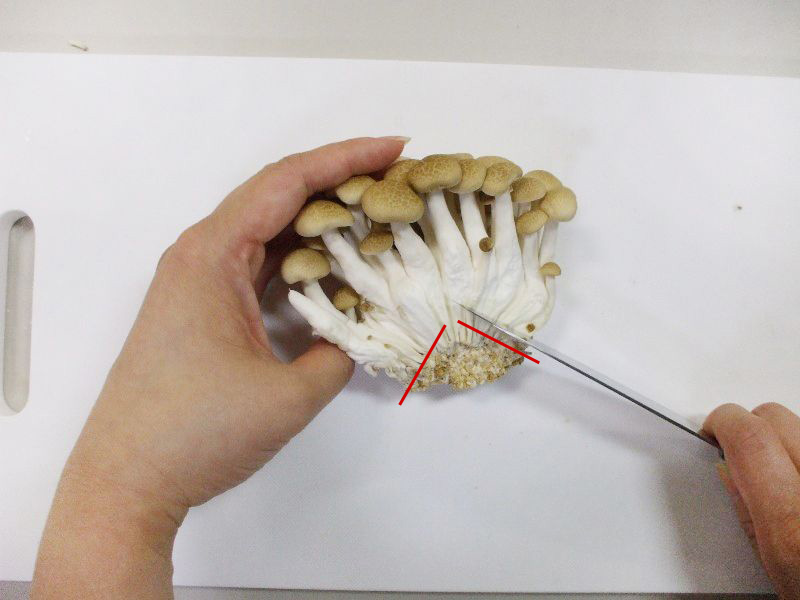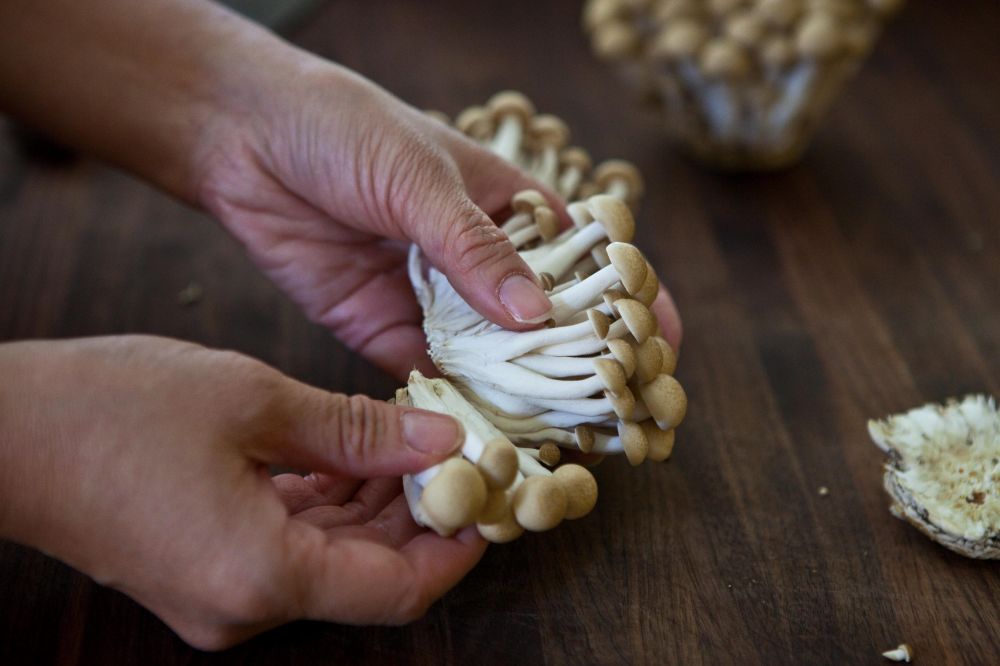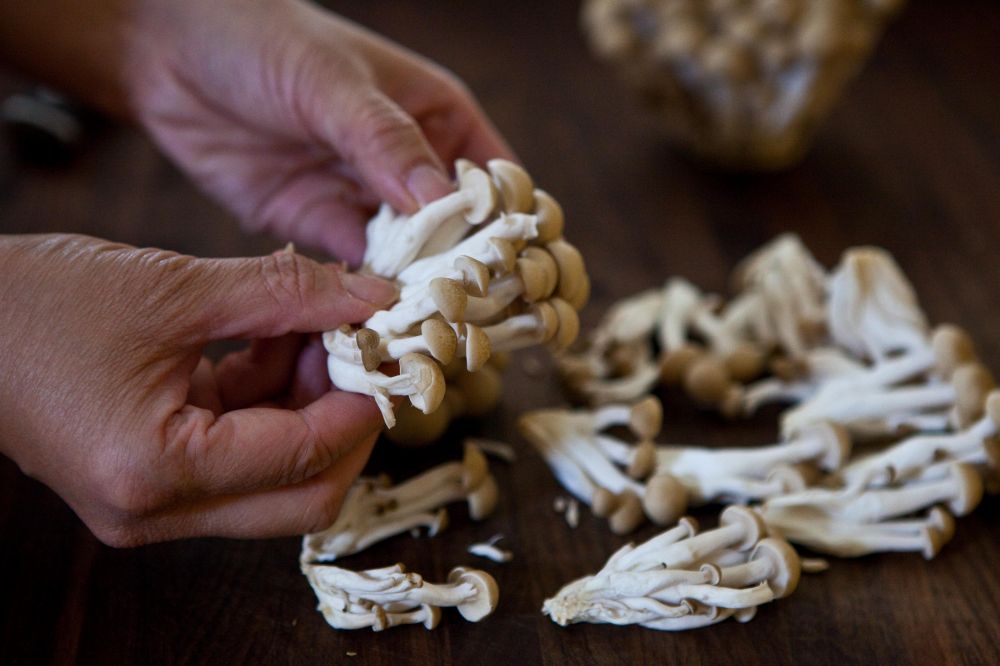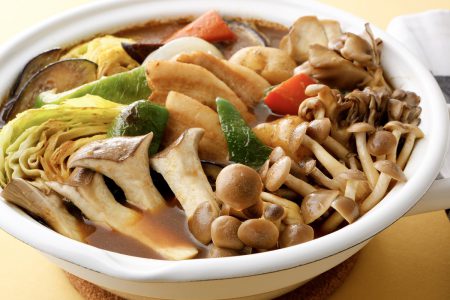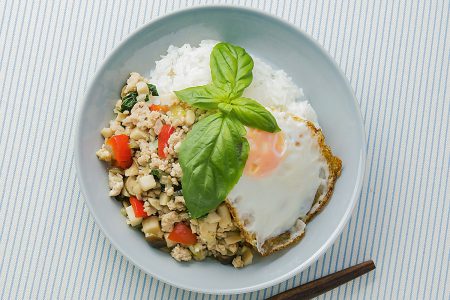An excellent Source of Nutrition
Bunashimeji is not only flavorful but also high in nutrition. A single package of Bunashimeji provides a significant source of Pantothenic Acid (15% RDV), Riboflavin (15% RDV), Thiamin (10% RDV) and Potassium (8% RDV). It is also cholesterol and sodium free in addition to low in calories.
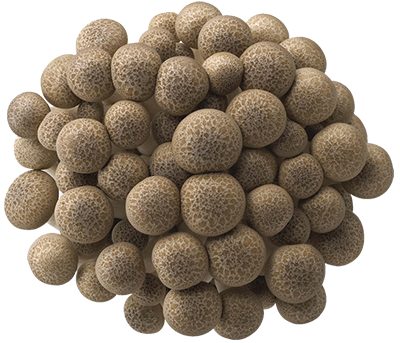
High in
- Pantothenic Acid
670mcg
- Riboflavin
170 mcg
- Potassium
403mg - Thiamin
120mcg - Niacin
120mcg
Low in
- Cholesterol
0mg
- Sodium
0mg
- Calories
36cal
* RDV – the recommended daily value based on a 2,000-calorie diet. / Serving size: 3.5 oz (100g)
Other Nutrients & What are they?
| Vitamin D | 1.3 mcg | 6% RDV | Dietary Fiber | 0g | 0% RDV | |
| Protien | 2g | – | Vitamin B2 | 0.27mg | 15% RDV | |
| Vitamin C | 3g | 2% RDV | Niacin | 0.67mg | 4% RDV | |
| Niacin | 670mcg | 4% RDV | Iron | 8% RDV | ||
| Vitamin B6 | 104mcg | 6% RDV | ||||
| Folate | 9.1mcg DFE | 2% RDV | ||||
| Ornithine | 116mg | |||||
Mushrooms are the only produce that contains Vitamin D.
According to The National Institutes of Health (NIH), Vitamin D is a nutrient that is important for promoting overall health and is especially important in developing and maintaining strong bones.
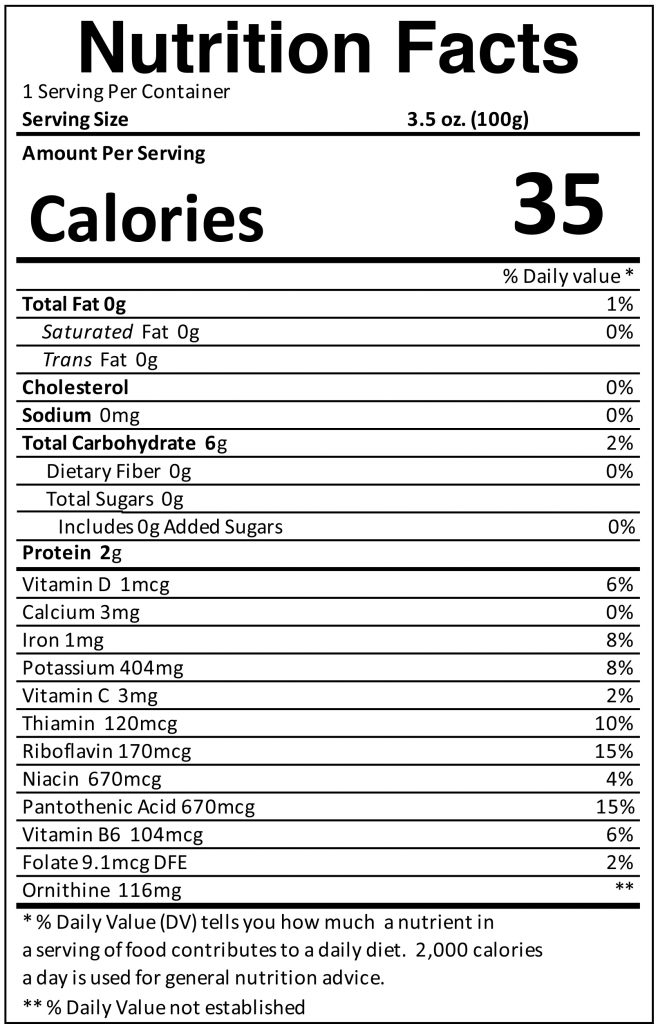
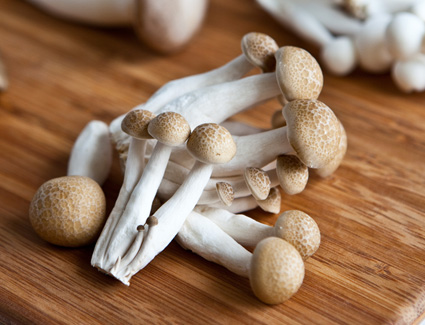
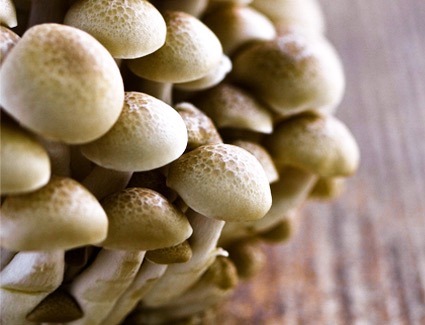
Taste / Flavor
Bunashimeji is a very popular mushroom in Japan. It is called “Beech Mushrooms” because they often grow on fallen beech trees. Wikipedia Shimeji/ Hypsizygus tessellatus
Bunashimeji has a nutty, buttery flavor, and a firm, crunchy texture. These mushrooms also grow in clusters and produce tender caps. Our Brown Beech mushrooms have been formulated to lessen the bitterness of traditional Bunashimeji. Still, western palettes will probably best enjoy Brown beech mushrooms after cooking, which mellow the flavor. Try this specialty mushroom baked, steamed, or sauteed in olive oil.
Hokto’s Kinoko is Clean and Ready-to-Cook
Eat Bunashimeji in clusters or individually separated. Simply trim off the base of the cluster and they are clean and ready-to-cook. Hokto’s kinoko do not need to be washed or rinsed because they are cultivated in a soil-free, clean environment and are 100% USDA Organic. To get the most out of Hokto’s Kinoko, always cook them before consuming. Our kinoko should not be served raw.
Why Hokto Kinoko is good for you
How to prepare Bunashimeji
Remove the base
First, separate the mushroom into two halves (image 1), then cut the base off creating the letter "V", making sure not to cut off any part of the mushroom that is edible (image 2). Make sure to pick Bunashimeji with thick stems.
Chop Bunashimeji up for greater umami
It is best to separate and chop up Bunashimeji to maximize its umami. When cooking a soup, add the mushrooms before the water boils, this will allow for the release of its maximum flavor.
Don’t over chop your mushroom
Separate the mushrooms into halves, remove the base, and start cooking! Feel the crispy texture, and even if you overcook the mushroom, it will not become soggy.
Separate before cooking
It is usually best to separate Bunashimeji into a bite-size portions making it easier to cook and eat. In addition, by separating them individually, you will increase the volume of for a dish.
Bunasimeji Recipes
Frequently Asked Questions
Q.Why are the mushrooms bitter? Should I be concerned?
A.
In the wild, Bunashimeji mushrooms have a strong bitter taste, but Hokto mushrooms are developed to be less bitter. In rare occasion, some people still can taste a little bitterness, this is due to the compound Polyphenol, which has been known to be a beneficial nutrition.
Q.Can you eat the base of Bunashimeji?
A.
The base of Bunashimaji is not edible, please remove them before cooking. For more information, see preparation tips.
Q.Why are the caps different colors?
A.
Individual mushrooms sometimes have different colors, Colors can sometimes vary from being whitish to blackish. The color of the Mushroom does not affect the taste or quality.
Research
As part of missions, our mushroom research center is dedicated to scientificaly unraveling the beneficial pharmacological effects of mushrooms in order to put them to use in promoting and maintaining healthy lifestyles.

